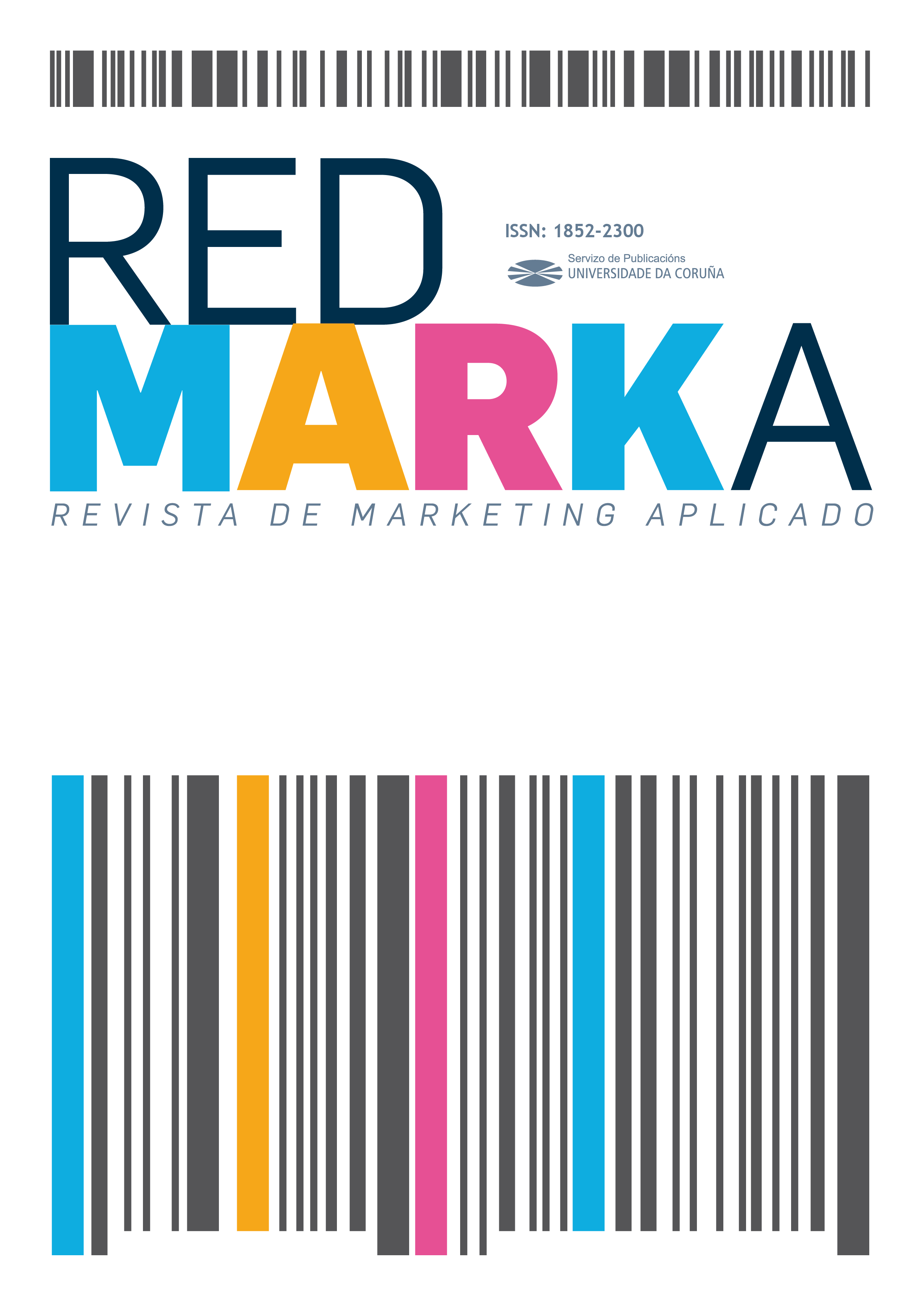Estrategias de las empresas del sector agroalimentario en las redes sociales. Las empresas malagueñas en Instagram
Contenido principal del artículo
Resumen
El objeto de este trabajo es analizar cómo comunican las empresas del sector agroalimentario en Instagram. Se analizan 1000 publicaciones descargadas a través de Fanpage Karma de 25 empresas malagueñas especializadas en este ámbito que tienen cuenta oficial en esta red. Se aplica la técnica del análisis de contenido, partiendo de una visión cuantitativa -reacciones, me gusta y comentarios-, junto con una perspectiva cualitativa, basada en el estudio de las estrategias, los formatos narrativos predominantes, el tono y el tema que más interacción generan entre los grupos de interés. El tema que más reacciones genera en los seguidores es el evento online; mientras que la estrategia con más interacción es el sorteo o concurso. En cuanto al tono que más moviliza a los stakeholders es la recomendación, y la emoción, el deseo. No obstante, no siempre se da el caso de que, a más publicaciones mayor impacto en la audiencia.
Palabras clave:
Descargas
Detalles del artículo
Citas
Aced, C. (2013). La comunicación corporativa: al otro lado de la información. Madrid: Cuadernos EVOCA.
Archambault, P. M., van de Belt, T. H., Grajales, F. J., Faber, M. J., Kuziemsky, C. E., Gagnon, S., Turgeon, A. F., Aubin, K., Gold, I., Poitras, J., Eysenbach, G., Kremer, J. A. M., and Légaré, F. (2013). Wikis and collaborative writing applications in health care: A scoping review. Journal of Medical Internet Research, 15(10), e210. https://doi.org/10.2196/jmir.2787
Blackshaw, P. (2006). The consumer-controlled surveillance culture. https://www.clickz.com/the-consumer-controlled-surveillance-culture/69332/
Boyd D. and Ellison NB (2007) Social network sites: Definition, history, and scholarship. Journal of Computer-Mediated Communication,13(1), 210–230.
Campos Freire, F. (2015). Los sitios de redes sociales como paradigma del ecosistema digital. En Campos Freire, F. y Rúas Araujo, J. (2015), Las redes sociales digitales en el ecosistema mediático. Cuadernos Artesanos de Comunicación, 92. La Laguna (Tenerife): Latina.
Casado, A., Méndiz, A., and Peláez, J. (2013). The evolution of Dircom: from communication manager to reputation strategist. Communication & Society, 26(1), 47-66. https://doi.org/10.15581/003.26.36151
Carrillo-Durán, M.-V. (2016). Importancia del profesional de la información en la dirección de comunicación de las organizaciones. Profesional de la información, 25(2), 272–278. https://doi.org/10.3145/epi.2016.mar.14
Coelho, R. L. F., de Oliveira, D. S., and de Almeida, M. I. S. (2016). Does social media matter for post typology? Impact of post content on Facebook and Instagram metrics. Online Information Review, 40(4), 458–471. https://doi.org/10.1108/OIR-06-2015-0176
Correa, T., Hinsley, A. W., and de Zúñiga, H. G. (2010). Who interacts on the Web? The intersection of users’ personality and social media use. Computers in Human Behavior, 26(2), 247–253. https://doi.org/10.1016/j.chb.2009.09.003
Devereux, E., Grimmer, L., and Grimmer, M. (2020). Consumer engagement on social media: Evidence from small retailers. Journal of Consumer Behaviour, 19(2), 151–159. https://doi.org/10.1002/cb.1800
Igartua, J.J. (2006). Métodos cuantitativos de investigación en comunicación. Bosch.
García Orosa, B. (2015). Redes y comunicación organizacional. Aproximación al discurso científico y a los retos más próximos. En Campos Freire, F. y Rúas Araujo, J. (2015). Las redes sociales digitales en el ecosistema mediático. Cuadernos Artesanos de Comunicación, 92. La Laguna (Tenerife): Latina
Krippendorff, K. (1990). Metodología de análisis de contenido: Teoría y práctica. Ediciones Paidós.
Latiff, Z. A., and Safiee, N. A. S. (2015). New Business Set Up for Branding Strategies on Social Media - Instagram. Procedia Computer Science, 72, 13–23. https://doi.org/10.1016/j.procs.2015.12.100
Latorre, A., Rincón, D. del, Arnal, J. (2003). Bases metodológicas de la investigación educativa. Ediciones Experiencia
Losada, D. J. C. (2019). Comunicación de crisis en un mundo conectado. Editorial EDIUOC.
Macnamara, J. (2016) Organizational listening: Addressing a major gap in public relations theory and practice. Journal of Public Relations Research, 28 (3- 4), 146-169. https://doi.org/10.1080/1062726X.2016.1228064
Murtarelli, G., Romenti, S., and Valentini, C. (2021). The impact of digital image-based features on users’ emotions and online behaviors in the food industry. British Food Journal, 124(1), 31–49. https://doi.org/10.1108/BFJ-12-2020-1099
Mut Camacho, M. (2020). Aprendizajes sobre el riesgo reputacional en época de Covid-19: la desinformación como riesgo corporativo. Doxa Comunicación. Revista Interdisciplinar de Estudios de Comunicación y Ciencias Sociales, (31), 19–39. https://doi.org/10.31921/doxacom.n31a1?
McIntyre, K. (2014). The evolution of social media from 1969 to 2013: A change in competition and a trend toward complementary, niche sites. The Journal of Social Media in Society, 3(2), 5–25.
Millen, D. R., Yang, M., Whittaker, S., and Fein-berg, J. (2007). Social bookmarking and exploratory search. In L. J. Bannon, I. Wagner, C. Gutwin, R. H. R. Harper, and K. Schmidt (eds.). ECSCW’07: Proceedings of the 10th European Conference on Computer-Supported Cooperative Work 24–28 (pp. 21–40). Ireland, Limerick September 2007. London: Springer.
Oliveira, L., and Cardoso, E. L. (2020). Engaging stakeholders in traditional food products through dissemination of knowledge and innovation based in digital platforms. Future of Food: Journal on Food, Agriculture and Society, 8(4), 1–13. https://doi.org/10.17170/kobra-202010131946
Otieno, D. O., and Matoke, V. B. (2014). Social media as tool for conducting academic research. International Journal of Advanced Research in Computer Science and Software Engineering, 4(1), 962–967.
Piñuel, J.L. (2002). Epistemología, metodología y técnicas del análisis de contenido. Estudios de sociolingüística, 3(1), 1-42.
Reagan, R., Filice, S., Santarossa, S., and Woodruff, S. J. (2020). #ad on Instagram: Investigating the Promotion of Food and Beverage Products. Social Media and Society, 9,1-28.
Reinecke, K., Nguyen, M., and Bernstein, A. (2013). Doodle around the world: Online scheduling behavior reflects cultural differences in time perception and group decisionmaking’. In Proceedings of CSCW13 (pp. 45–54). New York: AMC.
Sánchez, J.J. (2005). Análisis de contenido cuantitativo de medios. En MR Berganza, JA Ruiz (coords.). Investigar en Comunicación. Madrid: McGraw Hill.
Vázquez Almendros, P., y Paniagua Rojano, F. J. (2022). La labor de verificación de noticias desde el departamento de comunicación. Estudio de casos en el sector agroalimentario. Revista de Ciencias de la Comunicación e Información, 27, 1–23. https://doi.org/10.35742/rcci.2022.27.e238
Xiang, Z. and Gretzel, U. (2010). Role of social media in online travel information search. Tourism Management, 1(2), 179–188. https://doi.org/10.1016/j.tourman.2009.02.016







